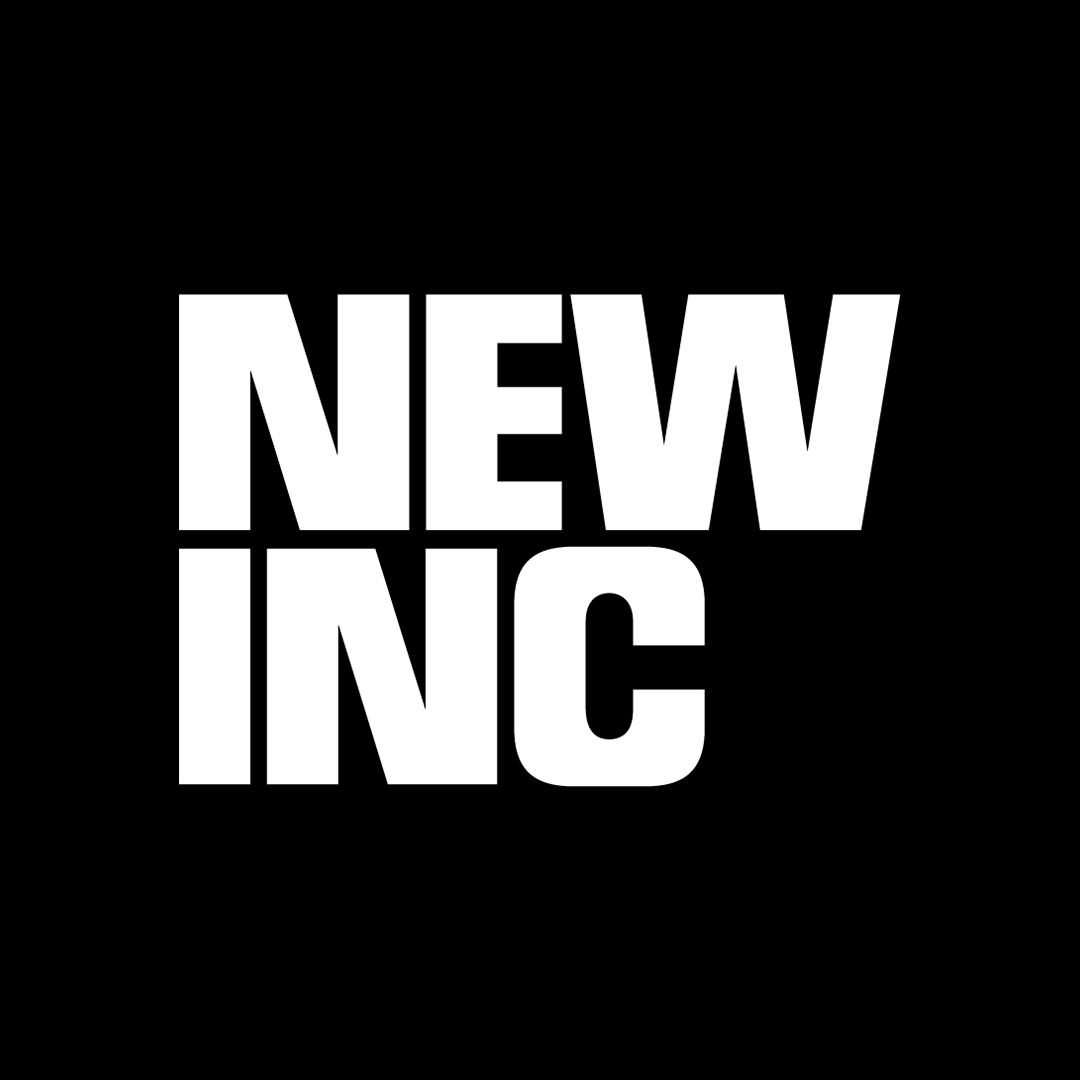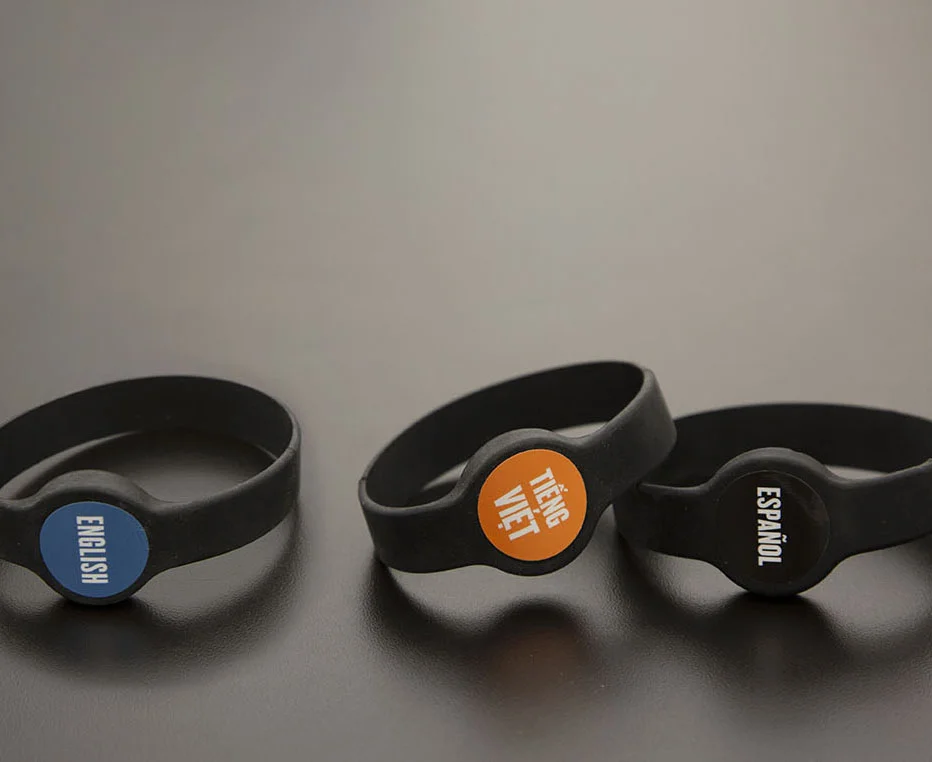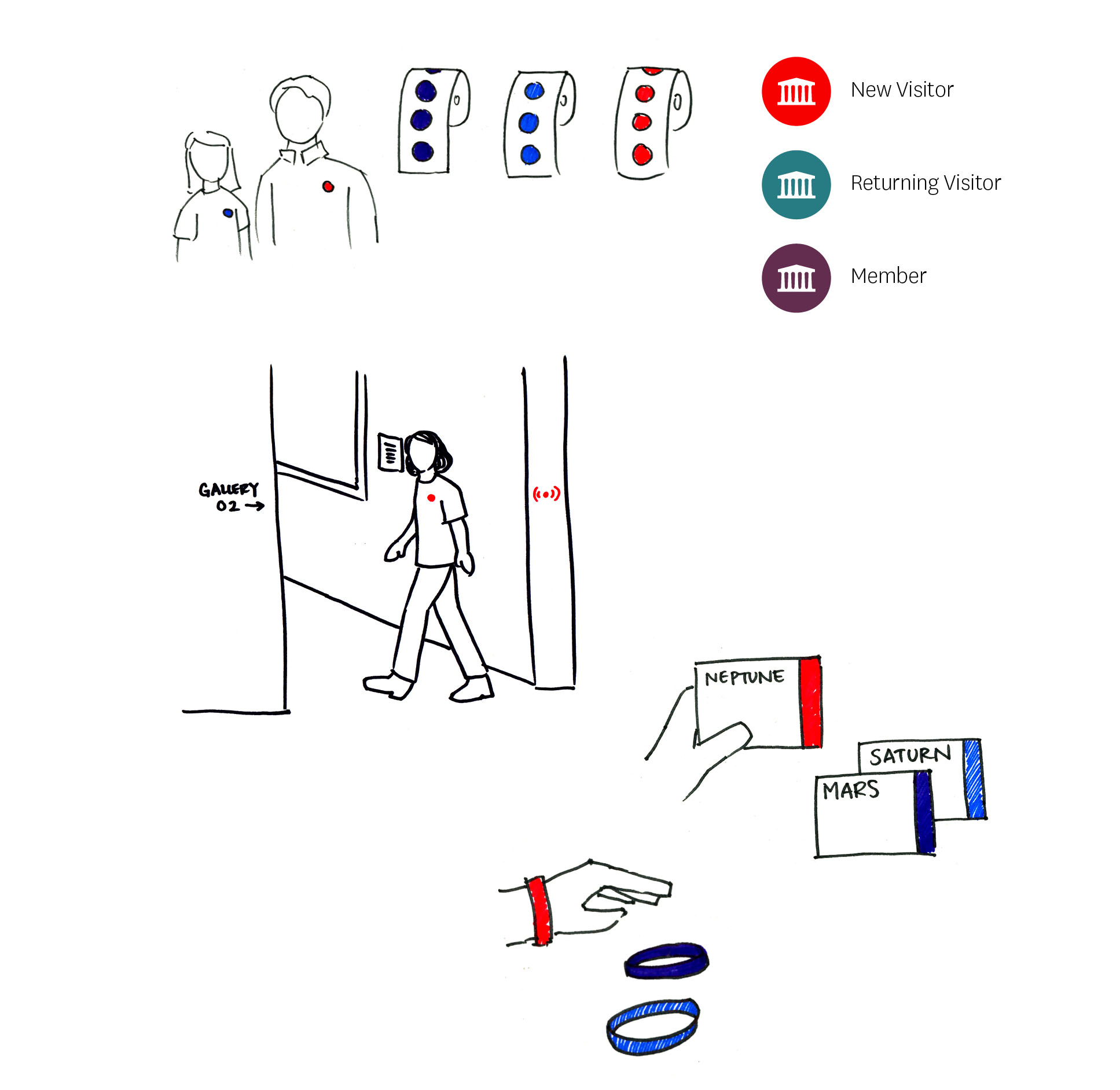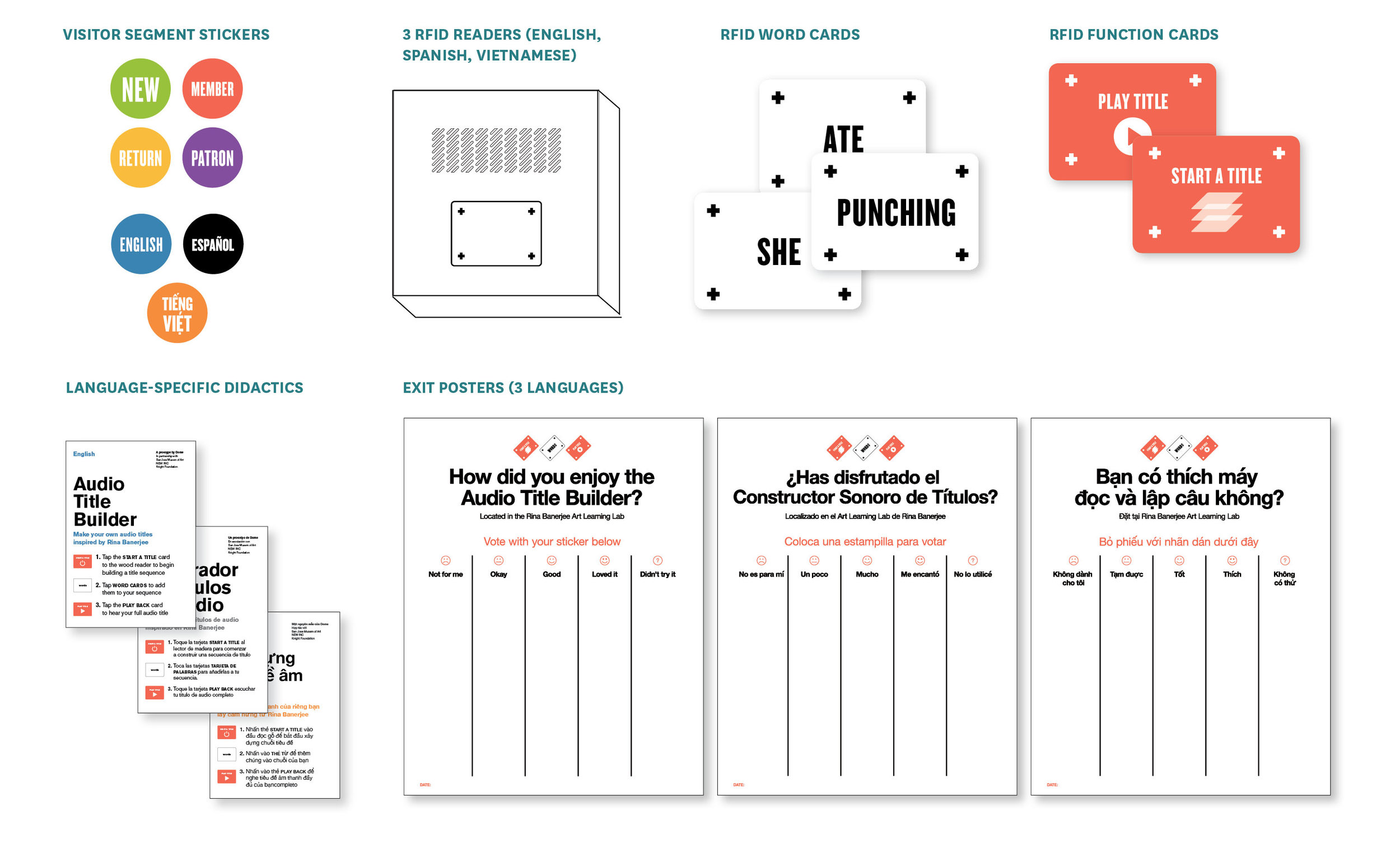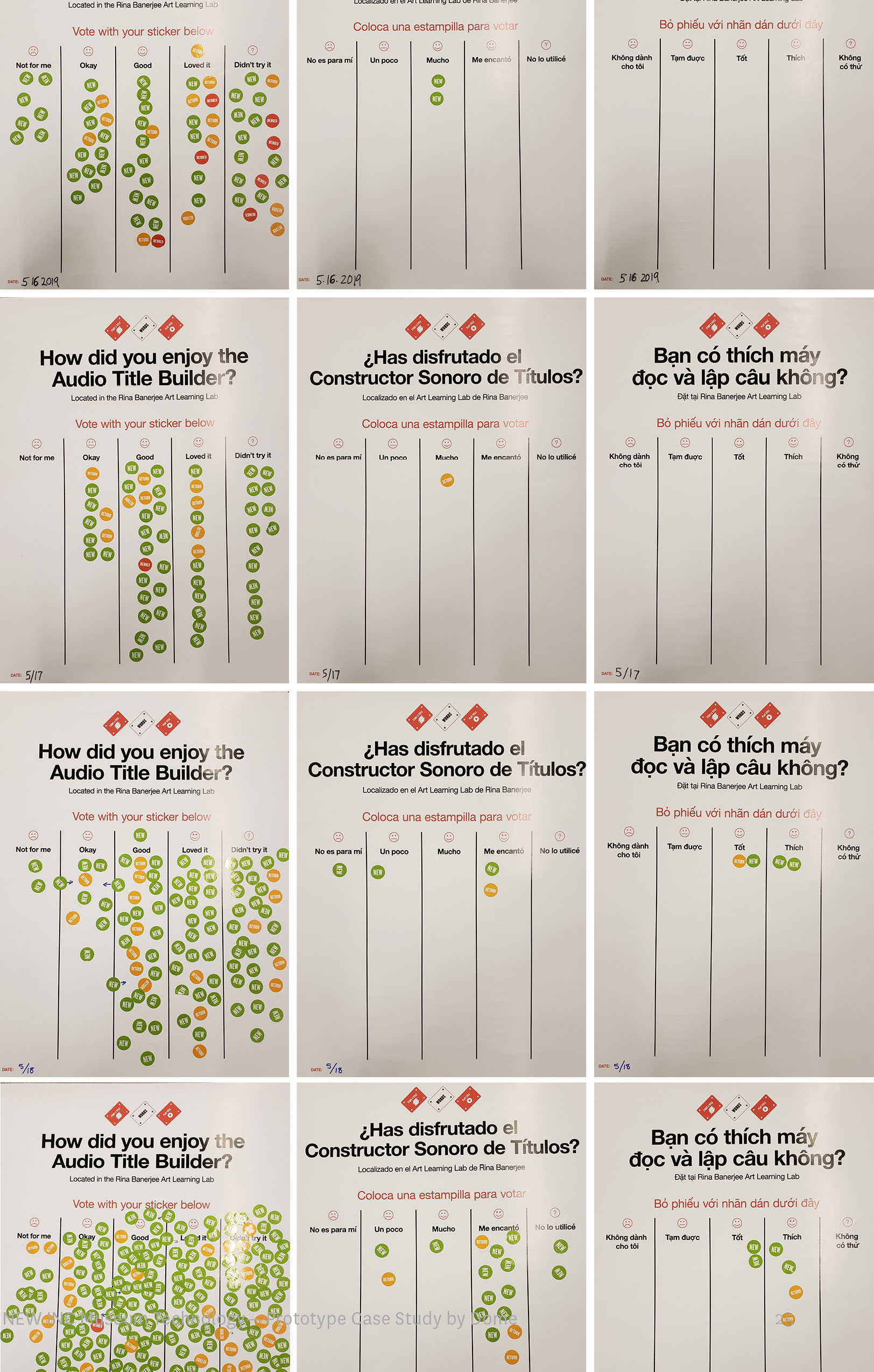Dome Makes Visitor Data Accessible through RFID
Dome Collective discusses their design research process and the lo-fi data collection possibilities that exist for museums with stickers and RFID.
Introduction
From September 2018 to August 2019, Dome Collective had the privilege to be a member of New Inc’s Museum Technology track, funded by the Knight Foundation, to design and prototype a product with a museum in a Knight City.
Our focus for the year was to conceive and test a product tailored for small to mid-sized museums which have limited resources and staff to use the technology that larger institutions and other sectors leverage to engage and grow their audiences.
Discovery
We conducted interviews with executives and staff from seven museums around the country and asked “What is the biggest barrier to engage your visitors?”
There was a common answer:
“We don’t know who our visitors are.”
Museums want to diversify and attract new audiences, but they need to understand who is coming through their doors, beyond a zip code.
Interviews
Our interviews included small, mid-sized, and large museums from the following cities:
New York, NY
Brooklyn, NY
Cambridge, MA
Cleveland, OH
Chicago, IL
San Jose, CA
What We Heard:
Visitor Demographics
We want a diverse and representative audience, but we need to understand who our current visitors are.
Visitor Accessibility
We want to remove the barriers for access —signage, programs, exhibitions, audio-video impaired, minority communities.
Visitor Engagement
There is an expectation for a personalized experience—what we see, what we learn, what we purchase.
Product Development
EQUITABLE TECHNOLOGY
Our approach considers how to create a product that is not only scalable and cost-effective for the museum but low-barrier and accessible for the visitor— we want the technology to be equitable.
The technology that is the core of our approach is a basic system of RFID (radio-frequency identification) tags, RFID reader, and a database that manages the content.
Using RFID technology, we will design new ways of engaging and understanding museum audiences from the start of their visit to the end.
RFID
This is an accessible technology for visitors with different levels of tech literacy. Using RFID means:
You don’t need a mobile device, you don’t need to download an app.
Wanting privacy can be a major stigma to sharing information, so the tech is opt-in—you leave it when you leave the museum.
The technology is repeatable, scalable, and affordable.
ARRIVAL
How might we learn more about our audience before they enter our museum?
Colored Stickers
Visitors are identified by colored entry stickers to indicate different segments
RFID Stickers
RFID-enabled stickers allow for passive visitor tracking throughout the museum
RFID Cards / Wristbands
Visitors are assigned or can set up specific profiles to personalize their experience throughout the museum
DURING VISIT
How might we deliver more personalized experiences to enhance visitor engagement?
Personalization
Set up visitor profiles for preferences / interest areas
Assignment of persona or character throughout a specific exhibit
Translation
Language
Visual-audio impairment
Age-specific content
Participation
Provocative questions that engage visitors to respond with a vote or pledge
Collect and save visitor-generated content along the way
Interaction
RFID-enabled 3D-printed objects
Triggers video/audio
Bringing the museum out
DEPARTURE
How might we capture visitor feedback when exiting the museum?
Surveying
Final exit question
Cast a final vote with your sticker
Sorting
Visitors can return wearables to designated bins to vote on a particular category
Prototype 1.0
SMARTER ADMISSIONS
Dome partnered with the San Jose Museum of Art (SJMA) to develop a process using a low-impact physical way to piggyback onto the existing ticketing system to get more out of the visitor admissions and exiting process.
At the admissions desk, visitors were asked to self-identify by specific segments and then given an ID sticker. Upon departure, visitors were invited to vote with their sticker on a simple survey poster that gathered visitor feedback about their experience.
This prototype was tested from 4/9/19–4/21/19 over 10 days of admissions.
ASSETS
(Visitor segments and exit questions were determined through a workshop with Dome + SJMA.)
RESULTS
Visitor Frequency of Exit Posters
75% New
23% Returning
1.5% Members
<1% Patrons
Preferred Language of Exit Posters
92% English
8% Spanish
<1% Vietnamese
What helped you enjoy the art today?
5% Museum Tour
39% Wall Text
23% Staff Conversation
6% Digital Technology
3% Events & Programs
24% Self-Guided Activities
Which exhibit did you enjoy the most?
39% Undersoul: Jay DeFeo
37% Catherine Wagner: Paradox Observed
17% Screen Acts: Women in Film and Video
7% None of These
We learned visitors “love” stickers and expect some kind of badge for entry. Staff on the ground felt the visual segmentation helped them engage better with their visitors. Nearly all visitors opted into the stickers, and the exit surveys had a very high response rate.
Prototype 2.0
ON-SITE VISITOR ENGAGEMENT
Following the results of Prototype 1.0, we developed a RFID-enabled audio experience for Rina Banerjee’s exhibition at SJMA. Inspired by the artist’s poetic artwork titles, visitors create their own audio title sequences in English, Spanish, or Vietnamese—the three languages native to San Jose’s largest communities.
Segmented stickers and exit posters were used to understand visitor impressions of the audio title builder.
The prototype was tested from 5/16/19–5/29/19 over 10 days of admissions.
AUDIO TITLE BUILDER
RFID-enabled audio experience in three languages: English, Spanish, Vietnamese.
ASSETS
RESULTS
Visitor Frequency
80% New
17% Returning
3% Members
<1% Patrons
Preferred Language
96% English
3% Spanish
<1% Vietnamese
Exit Posters of all visitors
72% Response rate
Overall Impression of all visitors
5% Not For Me
15% Okay
26% Good
27% Loved it
27% Didn’t Try it
The majority of SJMA’s visitors are “New” (78%) and “English” speakers (95%). Non-English visitors are most assisted by staff conversations, self-guided activities, and digital technology. Most visitors felt positively about the Audio Title Builder: “Good” (26%) and “Loved it” (27%).
Scaling the Product
This platform can scale to different exhibits and different museums. Any site-specific experience can be designed to be more accessible and inviting by providing multiple pathways through age, interest, language, hearing or vision abilities, alternative learning styles, or even how much time visitors have.
Visitors are empowered to participate, to vote, to interact with objects, because this exchange of “data”—their personal segmentation for a more personal response—is transparent: there is no collecting emails or tracking beyond the walls of the space.
This is equitable technology.
WHAT’S NEXT
First, we will refine our “Smarter Admissions” process so that the data collected ports directly into museum-wide metrics. Knowing their visitors better, museums can be more effective across all departments.
Second, is to seamlessly merge the identification process with responsive
on-site visitor experiences.
We are looking for clients and partners, in the private and public sectors, who want a way to understand their visitors better, in a scalable and accessible way, in order to engage and grow their audience.
Author: DOME
